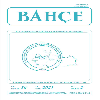ASMA ÖZSUYU AKIŞ HIZI VE MİKTARININ BELİRLENMESİNDE KULLANILAN BİR YÖNTEM: SAP FLOW METER / GRANİER YÖNTEMİ
A METHOD USED IN THE DETERMINATION OF GRAPEVINE SAP FLOW VELOCITY AND QUANTITY: HEAT DISSIPATION / GRANIER METHOD
___
- Balek, J, Pavlik, O., 1977. Sap Stream Velocity as an Indicator of the Transpirational Process. J. Hydrol 34:193– 200.
- Burgess, S.S.O., Adams, M.A., Bleby, T.M., 2000. Measurement of Sap Flow in Roots of Woody Plants: a Commentary. Tree Physiology, 20:909–913.
- Cohen, Y., 1991. Determination of Orchard Water Requirement by a Combined Trunk Sap Flow and Meteorological Approach. Irrigation Science 12:93–8.
- Dugas, W.A., Wallace, J.S., Allen, S.J., Roberts, J.M., 1993. Heat Balance, Porometer and Deuterium Estimates of Transpiration from Potted Trees. Agricultural and Forest Meteorology 64:47–62.
- Escalona, J.M., Flexas, J., Medrano, H., 2002. Drought Effects on Water Flow, Photosynthesis and Growth of Potted Grapevines. Vitis 41:57–62.
- Escalona, J.M. and Ribas–Carbo, M., 2010. Mehtodologies for the Measurement of Water Flow in Grapevines. Mehtodologies and Results in Grapevine Research, Chapter 5. Doi:10.1007/978-90-481-9283-0_5,sprin ger+business media b.v.
- Fernández, J.E., Green, S.R., Caspari, H.W., Diaz–Espejo, A., Cuevas, M.V., 2007. The Use of Sap Flow Measurements for Scheduling Irrigation in Olive, Apple and Asian pear Trees and in Grapevines. Plant Soil, doi:10.1007/s11104-007-9348- 8.
- Goldhamer, D.A., Fereres, E., Malta, Salinas, M., 2003. Can Almond Trees Directly Dictate Their Irrigation Needs? Calif. Agric. 57:138–144.
- Granier, A., 1985. Une Nouvelle Méthode Pour La Mesure Du Flux De Sève Brute Dans Le Tronc Des Arbres. Ann. Sci. Forest 42:193–200.
- Granier, A., 1987. Evaluation of Transpiration in a Douglas first and by Means of Sap Flow Measurements. Tree Physiol 3:171–176.
- Grime, V.L., Morison, J.L., Simmonds, L.P., 1956. Sap Flow Measurements from Stem Heat Balances: A Comparison of Constant with Variable Power Methods. Agricultural and Forest Meteorology 74:27–40. Irrigation Science 12:93–8.
- Hatton, T.J., Vertessy, R.A., 1990. Transpiration of Plantation Pinus radiata Estimated by the Heat Pulse Method and the Bowen Ratio. Hydrological Processes 4:289.
- Intrigliolo, D.S., Castel, J.R., 2006. Performance of Various Water Stress Indicators for Prediction of Fruit Size Response to Deficit Irrigation in Plum. Agric Water Manag 83:173–180.
- Ittner, E., 1968. Der Tagesgang der Geschwindigkeit des Transpirationsstromes im Stamm einer 75–jahringer Fichte. Oec Plant 3:177–183.
- 1Lu, P., Urban, L., Zhao, P., 2004. Granier’s Thermal Dissipation Probe (TDP) Method for Measuring Sap Flow in Trees: Theory and Practice. Acta Botanica Sinica. 46(6):631–646.
- 16. Nadezhdina, N., 1999. Sap Flow Index as an Indicator of Plant Water Status. Tree Physiol 19:885–891.
- Ortuño, M.F., García Orellana Y., Conejero W., Ruiz–Sánchez M.C., Alarcón J.J., Torrecillas A., 2006. Stem and Leaf Water Potentials, Gas Exchange, Sap Flow, and Trunk Diameter Fluctuations for Detecting Water Stress in Lemon Trees. Trees 20:1– 8.
- Pons, P.J., Truyols, M., Flexas, J.C., Medrano, H., Ribas–Carbo, M., 2008. Sap Flow Technique as a Tool for Irrigation Schedule in Grapevines: Control of the Plant Physiological Status. Options Méditerranéennes, Series A, No.80. 19. Smith, D.M. and S.J. Allen, 1996. Measurement of Sap Flow in Plant Stems. J. Exp. Bot. 47:1833–1844.
- Soegaard H., Boegh E., 1995. Estimation of Evapotranspiration from a Millet Crop in the Sahel Combining Sap Flow, Leaf Area Index and Eddy Correlation Technique. Journal of Hydrology 166:265–82.
- Steinberg, S.L., van Bavel C.H.M., McFarland M.J., 1989. A Gaugeto Measure Mass Flow Rate of Sap in Stems and Trunks of Woody Plants. Journal of the American Society for Horticultural Science 114:466– 72.
- Vieweg, G.H., Ziegler, H., 1960. Thermoelektrische Registrierung der Gerchwindikkeit des Transpirationsstromes I. Deutsch Botan Ges Ber 73:221–226.
- Williams, L.E., Araujo, F., 2002. Correlations Among Predawn Leaf, Midday Leaf, And Midday Stem Water Potential And Their Correlations With Other Measures Of Soil And Plant Water Status in Vitis vinifera L. J. Am. Soc. Hortic. Sci. 127:448–454.
- ISSN: 1300-8943
- Yayın Aralığı: Yılda 2 Sayı
- Başlangıç: 1968
- Yayıncı: Atatürk Bahçe Kültürleri Merkez Araştırma Enstitüsü
ÜZÜM ÇEKİRDEKLERİNİN ÇİMLENDİRİLMESİNDE ETKİLİ VE PRATİK BİR YÖNTEM: KUTUDA ÇİMLENDİRME
Murat AKKURT, Nuray ÖZER, Cengiz ÖZER, H. İbrahim UZUN, Burak AKTÜRK, Serkan AYDIN
BAĞCILIKTA KLON SELEKSİYONU METOD YAKLAŞIMLARI
YOZGAT İLİ BAĞCILIĞININ DEĞERLENDİRİLMESİ
ŞANLIURFA İLİNDE BAĞCILIĞIN MEVCUT DURUMU
Aslı POLAT, İsmail RASTGELDİ, Sadettin GÜRSÖZ
ANAÇ UZUNLUĞUNUN AÇIK KÖKLÜ ASMA FİDANI ÜRETİMİNDE FİDAN RANDIMANI VE KALİTESİNE ETKİSİ
Rüstem CANGİ, Muhammet Yasin GÜLER
GÜNEŞ ENERJİLİ KURUTMA SİSTEMİ İLE KURUTULAN ÇEKİRDEKSİZ KURU ÜZÜMÜN KALİTE KRİTERLERİ
Ahmet ALTINDİŞLİ, Mert ŞAFAK, Burçak İŞÇİ
Ahmet ALTINDİŞLİ, Akay ÜNAL, Turcan TEKER
BAZI SOFRALIK ÜZÜM ÇEŞİTLERİNİN TOKAT MERKEZ KOŞULLARINA ADAPTASYONU
Adem YAĞCI, Rüstem CANGİ, Duran KILIÇ, Nurhan MUTLU, Bülent BAŞARAN, Yalçın KAYA, Hüseyin TOPAL
TOPRAKTAN ŞARABA, BORNOVA MİSKETİNİN ÖZELLİKLERİNİN BELİRLENMESİ
